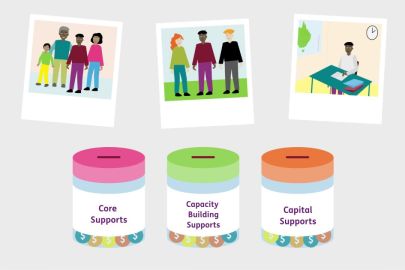Tech & NDIS: Bridging Gaps
The Role of Technology in NDIS
Tech & NDIS: Bridging Gaps. As the National Disability Insurance Scheme (NDIS) continues to transform the landscape of disability support in Australia, technology emerges as a pivotal tool in bridging gaps and enhancing accessibility. NDIS, since its inception, has aimed to empower individuals with disabilities by providing them with greater control over their support services. In this endeavor, technology plays a multifaceted role, facilitating communication, access to resources, and personalized care solutions.
Empowering Communication and Connectivity
One of the primary benefits of technology in the NDIS framework is its ability to facilitate communication and connectivity. Telehealth services, for instance, enable individuals with disabilities to access healthcare professionals remotely, overcoming geographical barriers. Moreover, assistive communication devices powered by advanced technologies such as Artificial Intelligence (AI) and Natural Language Processing (NLP) empower individuals with speech impairments to communicate effectively, thereby fostering independence and social inclusion.

Enhancing Accessibility Through Assistive Technologies
Accessibility lies at the core of NDIS objectives, and technology serves as a catalyst in this domain. Assistive technologies ranging from screen readers and magnification software to mobility aids and sensory devices empower individuals with disabilities to navigate their environments with greater ease and independence. Moreover, the advent of smart home technologies and Internet of Things (IoT) devices enables the customization of living spaces to accommodate specific needs, thereby fostering a more inclusive environment.
Challenges and Opportunities
While technology holds immense potential in enhancing the effectiveness of NDIS, it also presents certain challenges that need to be addressed. One such challenge is the digital divide, wherein individuals with disabilities from marginalized communities may lack access to necessary technologies due to economic constraints or limited infrastructure. Bridging this gap requires concerted efforts from policymakers, service providers, and technology developers to ensure equitable access to technological solutions.
Addressing Privacy and Data Security Concerns
With the proliferation of digital technologies comes the need to address privacy and data security concerns, particularly concerning sensitive health information. Robust cybersecurity measures and adherence to privacy regulations are imperative to safeguard the confidentiality of personal data and ensure trust among users. Furthermore, designing technologies with privacy by design principles ensures that individuals retain control over their data and privacy preferences.
Embracing Innovation and Collaboration
Amidst the challenges, technology also presents numerous opportunities for innovation and collaboration within the NDIS ecosystem. Collaborative partnerships between technology companies, disability service providers, and research institutions can drive the development of innovative solutions tailored to the unique needs of individuals with disabilities. Moreover, embracing emerging technologies such as virtual reality (VR), augmented reality (AR), and wearable devices opens up new avenues for personalized care and skill development.
The Future of Tech-Enabled NDIS
The integration of technology within the NDIS framework marks a paradigm shift in the provision of disability support services, promising greater autonomy, inclusion, and efficiency. Looking ahead, continued investment in technological infrastructure, digital literacy programs, and user-centered design approaches will be crucial in realizing the full potential of tech-enabled NDIS. By harnessing the power of technology, we can bridge gaps, empower individuals, and create a more accessible and inclusive society for all.





